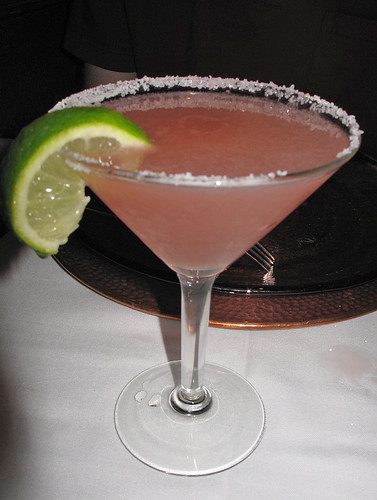Some respect for the Rusty Nail
Charles Edward Stuart, also known as “Bonnie Prince Charlie,” died 219 years ago today. He was an exiled claimant to the thrones of Scotland and England, whom the Jacobite movement tried (and failed) to restore to the throne. My own particular interest in Charlie is that he supposedly created the liqueur consisting of Scots whisky, honey and herbs that we now know as Drambuie, from the Scots Gaelic am dram buidheach, meaning “the drink that satisfies.”
That it does, it’s mighty good stuff. Although I love the flavor I tend to find straight liqueurs to be far too sweet for my taste, and what better to cut the sweetness and retain the flavor but a drink that combines Drambuie with its base, “the devil uisce beatha, guid Scots whisky?!
This drink is often dismissed as something that’s “easy,” and while it is indeed easy to make, you’d do yourself a disservice to ignore it, especially if you make it with a good Scotch base. Lots of people seem to forget about this drink, but they shouldn’t. It’s wonderful.
Rusty Nail
2-1/4 ounces blended Scotch whisky.
3/4 ounce Drambuie.
Lemon twist.Combine with ice in a rocks glass and stir. Twist the lemon peel over the drink and garnish with the peel.
I like this with a good blended Scotch like The Famous Grouse, but given the near-infinite variations and tastes in Scotch you will, of course, use one to suit your own taste. If you’re really wacky you might even use a smoky, peaty single malt.
Apparently today is also “National Brandy Alexander Day.” (Where do they come up with this stuff?) Unless you wish to celebrate the myriad drag queens who have adopted this as their nom-de-drag, and if you do like sweet, creamy drinks (I don’t) then you might want one of these instead. Combine a jigger of brandy with one ounce each of cream and crème de cacao, shake and strain, then grate a little nutmeg on top. Sip and be faaabulous, dahling.
UPDATE, 2013. Drambuie’s new product, Drambuie 15, is made with much older whiskies as its base, with at least 15 years of age on them, and is drier, more complex and far more sophisticated than its already sophisticated original older brother. This is lovely on its own, but it makes a fairly spectacular Rusty Nail.







